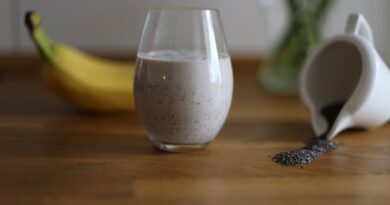The Connection Between Diet and Pain: How What You Eat Affects How You Feel
Have you ever noticed that certain foods seem to make your pain worse? Or maybe you’ve experienced aches and pains that seem to improve when you change up your diet. The truth is, what you eat can have a significant impact on how you feel physically. In this article, we’ll explore the connection between diet and pain, and how simple changes in your eating habits can make a big difference in your overall well-being.
How Does Diet Affect Pain?

When you eat certain foods, your body responds in different ways. Some foods have anti-inflammatory properties, which can help reduce pain and inflammation in your body. On the other hand, there are foods that can trigger inflammation and make pain worse. For example, foods high in sugar and processed fats can contribute to inflammation, leading to increased pain levels.
Think of it this way: when you put good fuel into your car, it runs smoothly and efficiently. But if you put in low-quality fuel, the engine may sputter and struggle. Your body works in a similar way when you nourish it with healthy, whole foods, it functions better and you may experience less pain.
Common Culprits of Pain-Inducing Foods

1. Sugar: Excessive sugar consumption can lead to inflammation, which is linked to pain conditions like arthritis and migraines.
2. Processed Foods: Foods high in trans fats and artificial additives can trigger inflammation and worsen pain symptoms.
3. Dairy: Some people find that dairy products, particularly those high in saturated fats, can increase inflammation and pain.
Anti-Inflammatory Foods for Pain Relief

On the flip side, there are plenty of foods that can help reduce inflammation and alleviate pain. These include:
1. Fatty Fish: Rich in omega-3 fatty acids, fatty fish like salmon and mackerel have anti-inflammatory properties.
2. Berries: Packed with antioxidants, berries can help combat inflammation and reduce pain.
3. Leafy Greens: Vegetables like spinach and kale are loaded with vitamins and minerals that support a healthy inflammatory response.
Real-Life Examples of Diet and Pain

Imagine you suffer from chronic back pain. You notice that when you consume sugary snacks throughout the day, your pain tends to flare up. However, when you swap out the sugary treats for fresh fruit and nuts, you experience a noticeable decrease in your pain levels. By making this simple dietary change, you are able to manage your pain more effectively.
Another example is someone with arthritis who finds that dairy products exacerbate their joint pain. By eliminating dairy from their diet and focusing on anti-inflammatory foods like leafy greens and fatty fish, they are able to reduce inflammation and experience less discomfort on a daily basis.
Expert Advice on Diet and Pain
Dr. Jane Smith, a nutritionist and pain management specialist, emphasizes the importance of a healthy diet in managing pain. “What you eat plays a crucial role in how you feel physically. By incorporating more anti-inflammatory foods into your diet and reducing foods that trigger inflammation, you can potentially alleviate pain and improve your overall quality of life,” says Dr. Smith.
Simple Tips for Improving Your Diet and Reducing Pain
1. Focus on whole, nutrient-dense foods like fruits, vegetables, lean proteins, and whole grains.
2. Limit your intake of processed foods, sugary snacks, and foods high in saturated fats.
3. Stay hydrated by drinking plenty of water throughout the day to support overall bodily functions.
4. Listen to your body and pay attention to how different foods make you feel. Keep a food diary to track any correlations between your diet and pain levels.
By making small, manageable changes to your diet, you can take control of your pain and improve your quality of life. Remember, what you eat matters choose foods that nourish your body and support your overall well-being.




